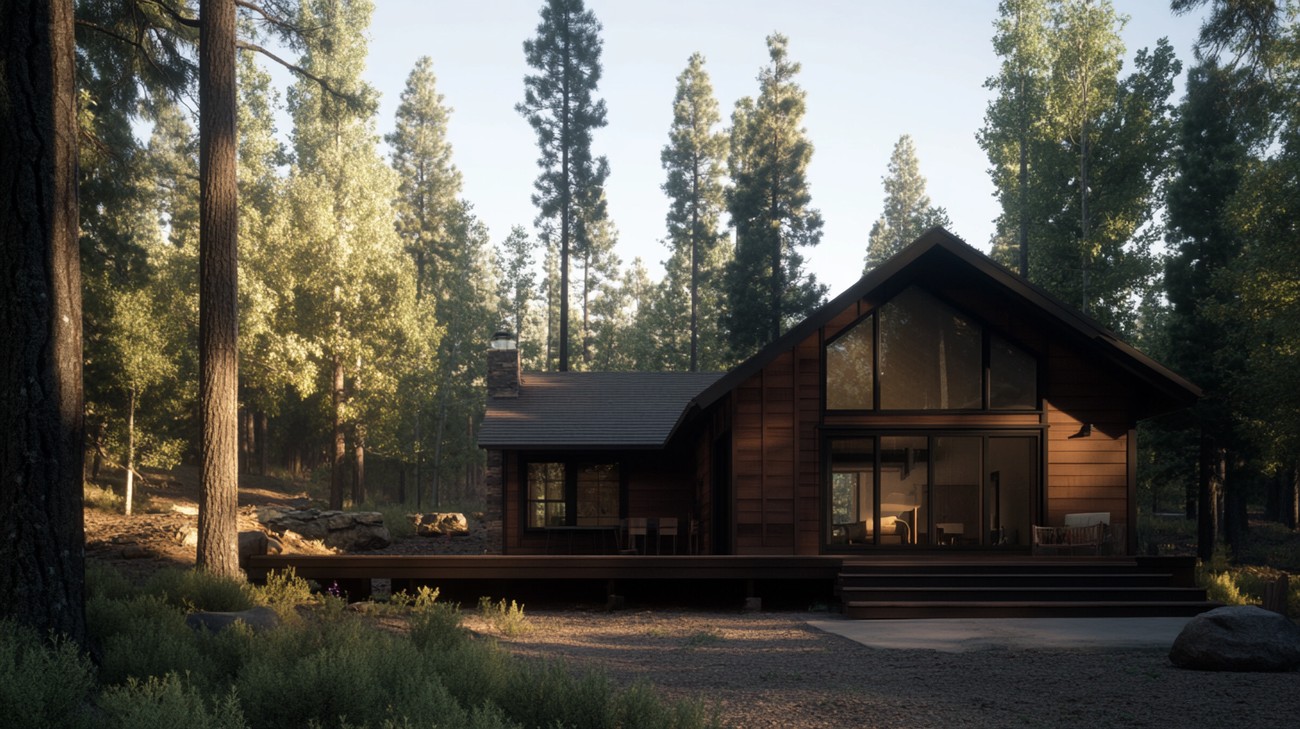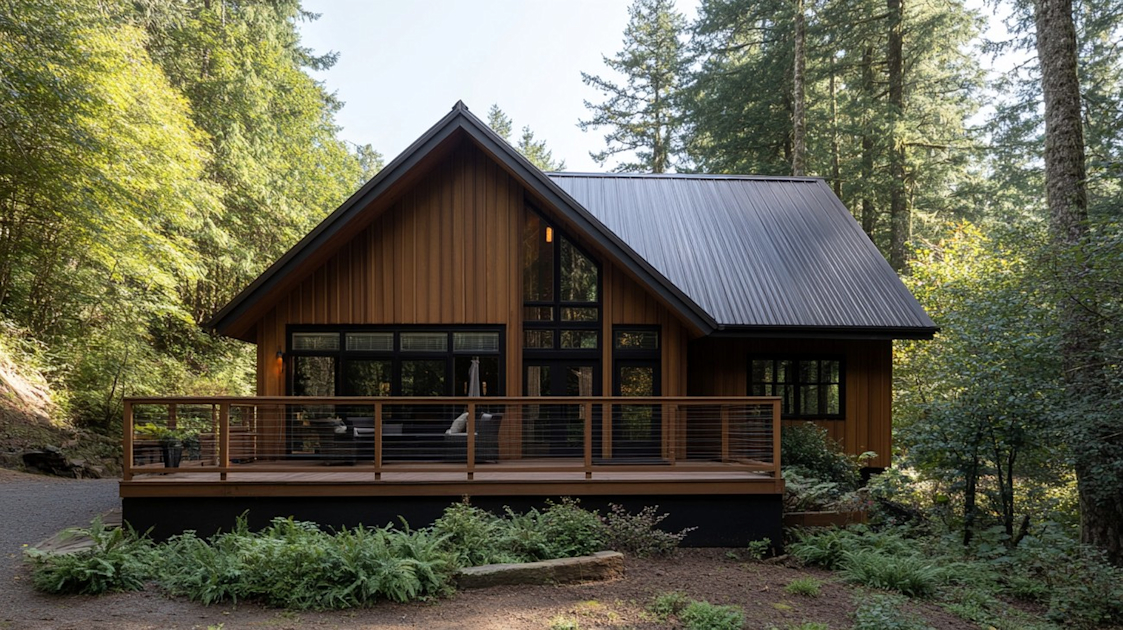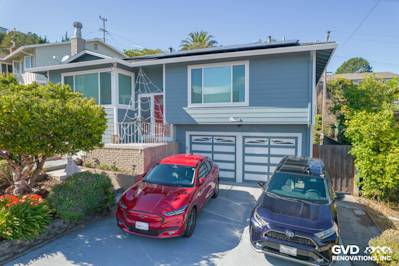Cedar siding, a prime choice for homeowners who value aesthetics and durability, provides endless style and character to residential designs. This blog will grant you a more in-depth knowledge of cedar siding, its layers, installation, maintenance, and overall benefits.
What is Cedar Siding?
Cedar siding is a type of cladding material made from cedar trees. Revered for its beauty and natural resistance to common wood problems like rot and pests, cedar siding bestows timeless grace to any property.
Cedar Siding Specifications
The aesthetic advantage isn't the only selling point in cedar siding's favor. It also exhibits unique qualities that make it an optimal choice for home builders and renovators:
- The natural oils in cedar wood render it resistant to moisture, insect infestation, and decay.
- Cedar’s cellular structure forms pockets of air that grant it superior insulation properties.
- It provides outstanding acoustic insulation, diminishing outside noise.
The Allure of Cedar Siding
Cedar siding flaunts a distinctive appearance, bringing authenticity and warmth to residential designs. This natural cladding option is available in various finishes and styles catering to the diverse aesthetics in home exteriors.
Cedar Siding Finishes
Cedar siding comes in many finishes like stained, painted, and even simply sealed.
- The natural grains and knots of cedar wood make stained cedar siding captivating.
- Painted cedar siding is a popular trend for modern homeowners, particularly in coastal homes.
- A simple sealant, while less transformative, preserves the natural look of the wood while preventing moisture damage.
Cedar Siding Styles
Ranging from traditional to contemporary, the styles for cedar siding are :
- Bevel (or clapboard)
- Tongue and groove
- Board and batten
- Cedar shingle (also known as shake)
Cedar Siding Installation
The cedar siding installation process is a meticulous one. Proper installation is critical to benefit from the full lifespan of cedar siding, which ranges between 25 to 40 years with good maintenance.
Installation Process
The installation process for cedar siding includes these general steps:
- Preparing the wall area by installing and sealing a moisture-resistant barrier
- Trimming and fitting the cedar siding panels or shingles
- Attaching the cedar siding with either nails or screws
- Applying a stain or sealant for enhanced longevity and a desired visual effect
Given cedar siding's susceptibility to improper installation, it's often best to engage professionals.
Cedar Siding Maintenance
For cedar siding longevity, periodic maintenance is necessary.
Maintenance Tasks
- Regularly cleaning with mild detergent and a soft brush to prevent buildup of dust, debris, and mildew.
- Inspecting annually for any signs of damage or wear.
- Reapplying a sealant or finish every few years.

Frequently Asked Questions about Cedar Siding
How long can I expect cedar siding to last?
When properly maintained, cedar siding can last for decades. While the actual lifespan can vary depending on a host of factors including weather conditions, quality of finish, and maintenance, it's not uncommon for cedar siding to last over 30 years.
What kind of maintenance does cedar siding require?
Cedar siding does require regular maintenance to keep its natural beauty and preserve its durability. This usually includes regular cleaning to remove dirt and mildew, along with periodic staining or painting to protect the wood from weather elements.
Can cedar siding be painted or stained?
Yes, cedar siding can be either painted or stained, depending on your preference. Staining can enhance the natural beauty and character of the wood, while painting can provide a wider range of color options.
Is cedar siding resistant to insects and decay?
Cedar siding is naturally resistant to decay, thanks to the presence of natural oils that act as preservatives. It’s also resistant to insects, including termites and carpenter ants, which often cause damage to other types of real wood siding.
What happens if cedar siding is not properly maintained?
If not properly maintained, cedar siding can develop a host of problems including warping, cracking, and rot. It can also become discolored due to exposure to weather elements. Regular maintenance activities help preserve the beauty and life of cedar siding.
How does the cost of cedar siding compare to other siding materials?
While the initial cost of cedar siding can be higher than some other siding materials such as vinyl or engineered wood, it's important to consider the long-term value that cedar siding offers. Given its longevity and added value to the home, many homeowners find cedar siding to be a worthwhile investment.
How do I know when my cedar siding needs to be replaced?
Signs that your cedar siding may need to be replaced include noticeable cracking, warping, or rotting of the boards, or persistent problems with insects or decay. Also, if your siding requires frequent repainting or staining, it might be time to consider replacement.
Is cedar siding eco-friendly?
Cedar siding is considered a green choice, as cedar is a renewable resource. Additionally, when cedar siding eventually needs replacement, it is biodegradable and can be turned into mulch or compost.
Can I install cedar siding myself?
Installing cedar siding is a task that requires expertise and the right tools. While it's possible for a motivated homeowner to do the job, most people find it best to hire a professional who has experience with cedar siding. This helps to ensure that the siding is installed correctly and will be able to stand up to the elements for years to come.

Pros of Cedar Siding
Natural Beauty and Aesthetics
When it comes to natural beauty and sheer eye-appeal, cedar siding is as good as it gets. Cedar siding's heart-grabbing aesthetic is unrivaled in the market. With its warm, rich, and inviting colors that range from yellow to red-brown, it adds immediate curb appeal to your property. Its fine-grained texture is a pleasure to behold and makes each plank unique in its own right. Moreover, cedar can be cut into a variety of styles such as bevel, board and batten, and tongue and groove, thereby providing an array of aesthetic options for homeowners.
Durability and Longevity
Cedar siding has a natural toughness that allows it to resist damage from the wind, water, and insects. In fact, it is one of the hardwoods that has the highest resistance to decay. Thus, if properly cared for, cedar siding can last for decades.
Excellent Insulation Properties
The insulative properties of cedar siding are commendable. Cedar contains natural oils that make it an excellent thermal insulator. For homeowners, this means lower utility bills since less energy is needed to heat or cool residences sided with cedar.
Easy to Paint or Stain
Cedar wood easily accepts a range of finishes, including paint, stain, and clear sealers. This means you can change or maintain the color according to your local climate and personal preference.
Environmentally Friendly
As a natural product, cedar siding is an environmentally friendly option for homeowners. The process of harvesting cedar has a smaller environmental footprint compared to manufacturing synthetic sidings. Moreover, it's biodegradable at the end of its life cycle.
Cons of Cedar Siding
High Maintenance
One of the most prominent downsides of cedar siding is that it requires frequent and high maintenance. Cedar wood siding needs to be sealed, stained or painted regularly to protect against pest infestation and moisture damage. Failing to maintain cedar siding often leads to damage that can be expensive to fix.
Costs
Cedar siding is considered a premium product in the siding market. While cedar siding's natural beauty and durability might justify the price for some homeowners, it's an expensive option compared to other materials.
Not Fire Resistant
Unless treated with special chemicals, cedar siding is not fire-resistant. This might pose a serious problem especially for properties located in areas prone to wildfires.
Not Resistant to pests
Wood is a natural target for pests such as termites, and cedar is no exception. Although cedar does have some natural resistance to certain pests, it is not immune. Regular treatments to prevent pest infestation are necessary.
Prone to Rot and Warping
If left untreated, cedar siding can warp, twist or shrink as it ages. Despite its reputation for weather resistance, cedar can rot when exposed to constant moisture or humidity. This makes cedar siding less ideal for regions with such conditions.
It can change colors if not maintained
Cedar siding can change color, usually a silvery-grey, if it isn't properly treated and maintained. Some homeowners might appreciate this weathered look, but others might see it as an undesirable feature.
Limited Availability
Since cedar is a natural resource, its availability can be limited based on factors such as location and local regulations. For those who reside in regions where cedar isn't readily available, shipping costs can drive up the price considerably.
Installation Challenges
Cedar siding installation can be a bit challenging. It usually requires the skill of a professional to ensure proper installation and to take steps necessary to protect the wood from moisture, insects, and other potential harm. DIY installation might not be the best idea unless you are an experienced home improvement enthusiast.

Myths and Misconceptions about Cedar Siding
It's beneficial to clear up some of the myths and misunderstandings surrounding cedar siding before making an informed decision. The following sections will highlight some of the most common myths about cedar siding.
Myth 1: Cedar Siding is Not Durable
Misconception: Cedar is Soft and Easily Damaged
A common misconception about cedar siding is that it's soft and easily damaged. While cedar isn't as hard as some other types of wood, it's still quite robust and can hold up well against the elements. Cedar has a natural resistance to moisture, decay, and insect damage. Plus, proper maintenance can significantly increase the durability and longevity of cedar siding.
Myth 2: Cedar Siding Requires Constant Maintenance
Misconception: Cedar Siding Needs Constant Restaining and Repainting
While it's true that cedar siding requires maintenance to keep its appearance and protect it from the elements, it doesn't require 'constant' restaining or repainting. Generally, cedar siding needs to be repainted or restained every five to ten years – however, this largely depends on climate and exposure to the sun and precipitation.
Myth 3: Cedar Siding is Flamable
Misconception: Cedar Catch Fire Easily
Due to its organic nature, many people mistakenly believe that cedar siding is highly flammable. While it's true that wood can burn, cedar actually has a level of natural fire resistance. When properly treated with fire retardant, cedar siding can be as safe as other more 'fire-resistant' siding materials.
Myth 4: Cedar Siding is Bad for the Environment
Misconception: Harvesting Cedar is Harmful to the Environment
Cedar siding comes from a renewable resource, and responsible harvesting practices can ensure that the cedar supply is sustainable. This is a huge plus for those concerned about the environment. Moreover, because cedar siding lasts for decades, it can be considered more environmentally friendly than synthetic siding options, which often need to be replaced more frequently and end up in landfills.
Myth 5: Cedar Siding is More Expensive
Misconception: Cedar Siding Costs are Prohibitive
Many people incorrectly assume that cedar siding is significantly more expensive than other siding options. In reality, the initial cost of cedar siding can be higher than some other materials. However, when you consider the longevity, beauty, and enhanced property value that cedar siding offers, the long-term value can make it a cost-effective choice.
Myth 6: Cedar Siding is Prone to Pest Attacks
Misconception: Cedar Attracts Termites and other Insects
While all wood homes can face the risk of termite infestation, it's a misconception that cedar attracts these sorts of pests. In fact, cedar has its natural oils that act as bug repellants, making cedar less attractive to pests such as termites than many other types of wood. To further decrease the risk, cedar siding can be professionally treated with insect repellents and preventive substances.
In conclusion, several myths surround the use of cedar siding. By clearing up these misconceptions, homeowners can make more informed decisions about whether cedar siding is the right choice for their home improvement goals.
Summary
Cedar siding has been a constant in the realm of exterior home design for a reason. Its natural beauty and durability make it an attractive consideration for any homeowner aiming to boost curb appeal and value. Putting the numerous aesthetic advantages aside, it's commendable how this type of siding truly stands out for its long-lasting properties and straightforward maintenance requirements.
Another aspect worth highlighting is the energy efficiency attribute of cedar siding. It provides a natural insulation to your home, thus reducing your energy bills and making your household more eco-friendly. So, it’s not just about the pleasing aroma and the timeless rustic charm, cedar siding can be a feasible choice for those extremely conscious about their carbon footprint.
The versatility of cedar siding also merits nods from homeowners and designers alike. Available in a wide array of patterns and shades, it caters to diverse preferences, matching different style homes. While it could cost a bit more upfront than other materials, the unmatched beauty, efficiency and durability of cedar siding make it a splendid investment for the long run.
About Bay Area Siding Company
Bay Area Siding Company is your go-to home improvement partner in Bay Area, CA. Rooted in exceptional customer service, we specialize in top-notch siding installations and repairs that breathe new life into your home. Made up of a team of highly skilled craftsmen who are passionate about what they do, we guarantee an unmatched commitment to precision and quality. With us, the look and longevity of your home's exterior is in good hands. So, whether you're looking to upgrade your home's style or protect it from the elements, trust us to deliver nothing but the best for your siding needs.
















